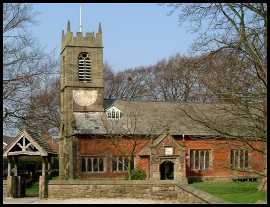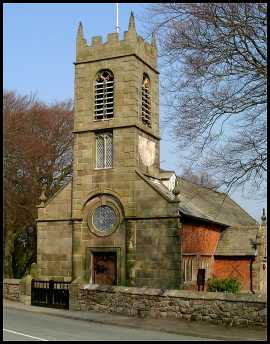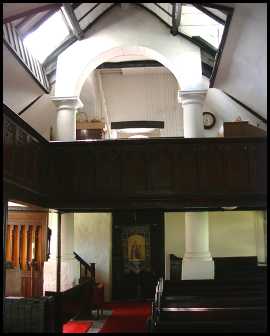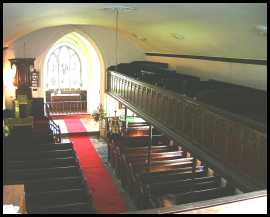|
Brief
description of the church
St
Michael at Much Hoole (sometimes simply called Hoole) dates
from 1628 - the year that is carved over the south door. It was
then that John Stone of the nearby Carr House funded the building as
a chapel of ease of Croston church. It retained its inferior
position for a mere thirteen years, until 1641, when it became a
parish church in its own right. The Act of Parliament granting
parochial status notes "The inhabitants thereof cannot at any
time with convenience repair to the parish church of Croston by
reason of the remote distance from the same and the often
inundation of waters happening in those parts."
The
main body of the church is of warm red brick with darker bricks
picking out the occasional diamond or cross pattern. Those nearer
the tower are a slightly darker red. The bricks are said to be of
Dutch origin, brought to Lancashire as ballast on the ships of
Andrew Stone (brother of John, and a merchant in Amsterdam) which
travelled up the River Douglas. Whatever the origin, this
brickwork, combined with the simple square headed windows with
round-arched lights, and stone decoration, gives the church a
charmingly domestic feel.
The
west tower is an addition of 1719 - the date being inscribed in
the lead of the roof. It is stone faced, with barely emphasised
quoins, and projects only slightly from the body of the
church. The west end is a symmetrical composition of a
square-headed door, with oculus and arch above, flanked by Tuscan
demi-columns. Above is a two light window, and over that bell
louvres (altered). The tower is topped by small corner pinnacles
and battlements. On the south face of the tower is a large painted
sundial.
The
nave has a single aisle leading to a pointed chancel arch and
chancel. The latter, known as the Horrocks Chapel, was added in
1858. A large pulpit with ornate tester, and dated 1695 stands to
the north side of the chancel arch.
|




